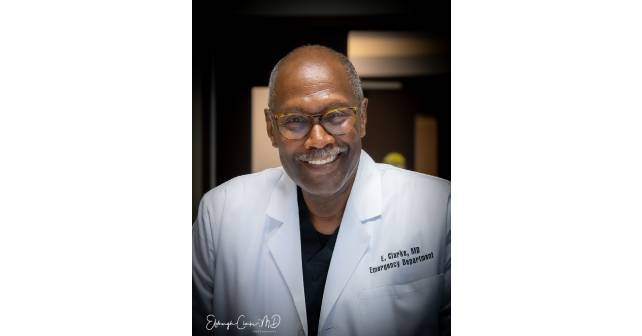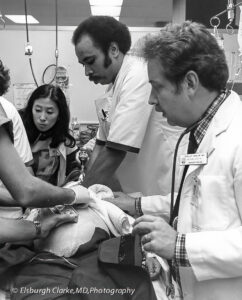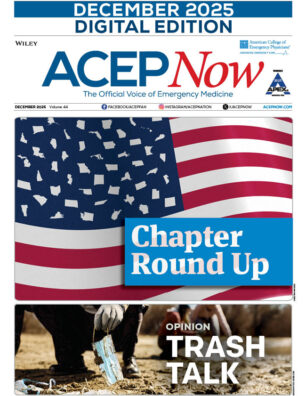
Emergency medicine was approved as the 23rd medical specialty in 1979, shortly after a young Elsburgh Clarke, MD, discovered the burgeoning specialty.1 Just one year prior, Dr. Clarke had begun an emergency medicine residency at what was then known as LA County–USC Hospital, Los Angeles.
Explore This Issue
ACEP Now: Jan 01“I was about two months into a family practice internship when I went to visit my uncle whose neighbor happened to be an ED resident,” Dr. Clarke said. “I spoke with him and said to myself, ‘This may be something that I want to do.’”
The specialty, he said, spoke to his interest in surgery and EMS in a way that family medicine did not. A phone call to LA County–USC revealed that the emergency medicine program had one spot left for the following year.
So, about one year after graduating medical school, Dr. Clarke was set to begin a decades-long career in emergency medicine … and he brought along his camera.
Firsthand Account
The photos that Dr. Clarke took from 1978–1980 provide a glimpse into working in an emergency department in the years the specialty was being established. At first glance, one might notice the clothes—nurses in white dresses and doctors in wide ties or bellbottom jeans—or the hair—afros, sideburns, and mustaches aplenty. A closer look, though, also shows the technology of the day—a bulky, two-way radio for communicating with EMS, metal gurneys, glass saline bottles, and portable ECG monitors the size of a small shopping cart.
Less obvious to the eye is the experience of the people working in the photos.
“Emergency medicine was fairly new then, and most attendings were not emergency physicians,” Dr. Clarke said. “In fact, the director of emergency medicine at the time was head of OB–GYN, and the assistant director was a psychiatrist.”
Dr. Clarke is a part of a generation of physicians who shaped the specialty. They learned by doing, he said, by falling down and getting back up.

ED attendings Dr. Gerald Whelan and Dr. Shumary Chow supervising a full arrest in “C” booth—the main trauma room—with an ED tech administering CPR. (Click to enlarge.)
“We learned a lot by ourselves,” Dr. Clarke said. “Some of the residents who graduated in those first classes came back to be our mentors, but as far as attendings go … there weren’t any at that time.”
Pages: 1 2 3 4 | Single Page






3 Responses to “Dr. Elsburgh Clarke Was Among First to Specialize in Emergency Medicine”
January 16, 2025
Charles Boursier, MDElsburgh continues to be a remarkable man, excellent photographer and hard working physician, putting in the hours few much younger would be willing to do. He continues to be a fine doctor and compassionate patient advocate.
February 2, 2025
Neil Shocket MDI was a fellow resident with Elsburgh back when we started at LAC/USC in 1980. Technology has come a long way since those early years when we used to do our own basic tests in the tiny lab in the back behind C booth. I’m still Board Certified.
After a long and satisfying career as an Emergency Physician, I now teach the “introduction to clinical medicine” course to new medical students at Keck School of Medicine at USC.
The old hospital is now a historical landmark and kept in its original condition although no longer used to treat acute patients. As a special treat I take my students on a private tour of the old ER. You can definitely still feel the ghosts of patients and staff members roaming the halls.
May 30, 2025
Terrence L. Jones MDI worked with Dr. Clark when I was a paramedic in Pomona in the mid-1980’s. It was his influence, as well as his colleagues at Pomona Valley Hospital that encouraged me to go to medical school. After nearly 30 years on the Big Island of Hawaii, in single coverage ERs and as EMS Medical Director for the Department of Health, the seed planted found favorable soil.